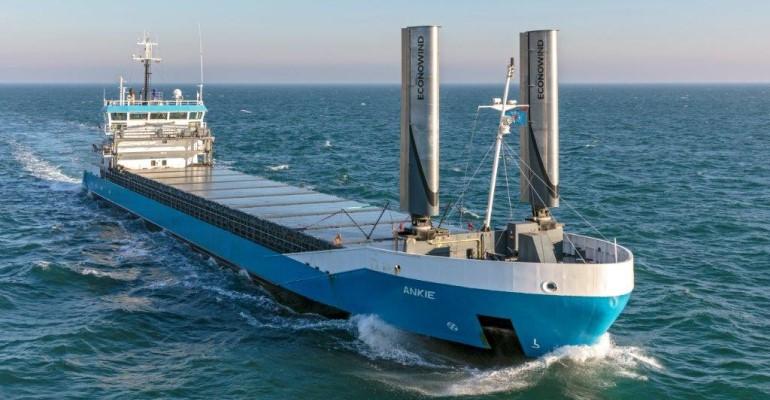The EU’s Wind Assisted Ship Propulsion (WASP) project has ended. So far we seem to have favorable findings concerning the viability of retrofitting ships with wind propulsion units in addition to conventional power.
Estimates seem to be coming in at up to 10% savings. This is in the North Sea, where the winds blow heavy. However, 10% is not to be sneezed at. It’s a significant reduction in both energy and GHG emissions.
The picture of a bulker fitted with the sails shows one way to add the wind power.

Cooperation between shipowners and technology developers as well as university researchers is key. The list of partners is impressive.

This statement is from their website:
“The project brings together universities, wind-assist technology providers with ship owners to research, trial and validate the operational performance of a selection of wind propulsion solutions on five vessels thus enabling wind propulsion technology market penetration and contributing to a greener North Sea transport system through harvesting the region’s abundant wind potential.”
Source: https://northsearegion.eu/wasp/
WASP has published their last newsletter, and also other publications. It’s interesting reading. There is also a final webinar.
Since I sailed as a kid, I’ve been interested in commercial applications of wind power. It’s exciting to see new engineering marvels tailored for the maritime world. Let’s hope the WASP research will lead to more and better wind power for ships.

Paul Bartlett | Jun 30, 2023
